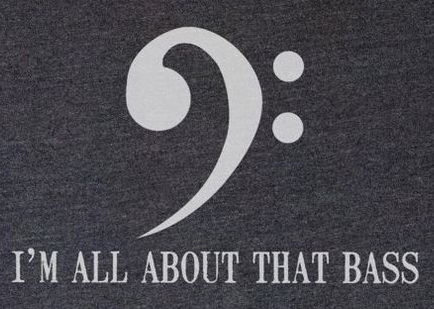Like the treble clef, the bass clef tattoo is a tattoo that is likely to be worn by people that are involved with music – especially musicians.
Music is something that is universally recognized across many different cultures and generations. For some people, music is their livelihood; for others, it is “the food of love.” Musically themed tattoos are usually an expression of the passion of a person for music, whether they are a musician or a music connoisseur.
Love for music can be represented in a variety of ways in tattoo art, and musical tattoos reflect deep emotional connections to songs or instruments. Like a lot of people who enjoy music rarely stop enjoying it, musical tattoos make a timeless choice for them. The bass clef is one of them.
A bass clef is a musical symbol that is placed at the beginning of staff (the five horizontal lines on which notes appear), to signal the “key” or reference for the notes which follow. The word “clef” is a French word for the word “key.” The line works as a reference point by which the names of the notes on some other line or space of the staff may be set on. As an exception, there is one clef that references a note in a space rather than on a line.
There are three types of clef used in modern music notation: F, C and G. That is why the bass clef is also called the F clef, and another reason being that the two dots in the symbol lie above and below the horizontal line which indicates the note F (below middle C, hence bass, or a lower register and set of tones). As we already mentioned, each type of clef assigns its reference note to a line, and in some rare cases, space, depending on its placement on the staff. G and F clefts are used as treble and bass clefs, respectively, in the vast majority of modern music.
Once one of these clefs has been placed on one of the lines of the staff, the other lines, as well as spaces, can be read about it.
The use of three different clefs opens up possibilities for writing music for all instruments, as well as voices, although they may have different tessituras. This can be difficult to do with only one clef since the modern staff has only five lines.






